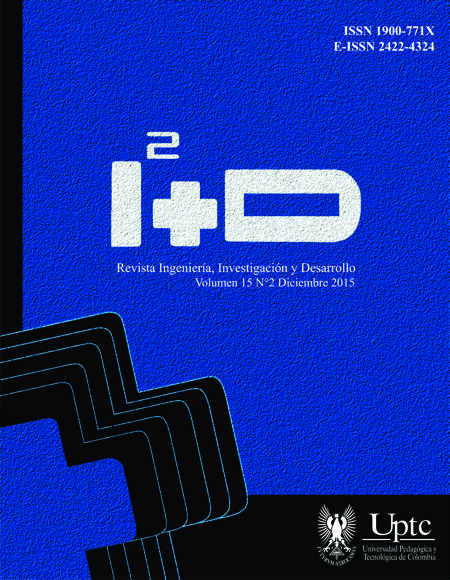New record of Pseudocidaris sp. (Echinoidea:Hemicidaridae) of lower Cretaceous (Valanginian-Hauterivian) from Zapatoca, (Santander Colombia).

Abstract
In this study it is reported and described a regular echinoderm of Pseudocidaris genus in the Rosablanca Formation of Lower Cretaceous at the municipality of Zapatoca (Santander, Colombia). The species shows little sinuosity in the ambulacra and a dyciclic apical disc. An exploratory phylogenetic analysis showed that the lineage of the Zapatoca species was originated in the Callovian with P. Romani and that it is related with P. lusitanica (Oxfordian) and P. clunifera ( Barremian-Aptian)Keywords
fossil, rosablanca formation, regular urchin, sea urchin
Author Biography
Javier Hernando Jerez-Jaimes
Escuela de Geología
Alvaro Sergio Osma-Duarte
Escuela de Geología
Joan Sebastián Puentes-Pérez
Escuela de Geología
References
- Buitron, B. E. (1978). Hemicidaridos (Echinodermata, Echinoidea) del Jurásico Superior de Oaxaca y Chiapas. Univ. Auton. Mexico, Inst. Geología. Revista 2, 65-68.
- Cotteau, M.M., Peron & Gauthier (1883). Echinides Fossiles de La Algerie. Premier Fascicule. Paris: G. Masson.
- Cotteau, M.M., Peron & Gauthier. (1884). Echinides Fossiles de L'Algerie. Deuxieme Fascicule. Paris: G. Masson.
- Etayo-Serna, F. (1964). Posición de las faunas en los depósitos Cretácicos colombianos y su valor en la subdivisión cronológica de los mismos. Boletín de Geología, 16 (17), 141.
- Glossary of Terms of Echinoderms. Southeastern Regional Taxonomic Center South Carolina Department of Natural Resources. Retrieved from http://www.dnr.sc.gov/marine/sertc/.
- González-Peláez, S.S. (2004). Biología poblacional del erizo Echinometra vanbrunti (Echinodermata:Echinoidea) en el sur del Golfo de California, México. Tesis de Maestría. Centro de Investigaciones Biólogicas del Noroeste, SC.
- Guzmán, G. (1985). Los Griferidos Infracretácicos Aetostreon couloni y Ceratostreon boussingaulti,de la Formación Rosablanca, como indicadores de oscilaciones marinas. Proyecto Cretácico. Bogotá: Publicaciones Geológicas Especiales del Ingeominas.
- Hammer, Ø., Harper, D.A.T. & Ryan, P.D. (2001). PAST: Paleontological statistics software package for education and data analysis. Palaeontologia Electronica, 4(1), 9. Retrieved from http://palaeo-electronica.org/2001_1/past/issue1_01.htm.
- Kier, M. P. (1972). Tertiary and Mesozoic Echinoids of Saudi Arabia. Smithsonian Contributions to Paleobiology. (10).
- Kroh, A., & Smith, A.B. (2010). The Phylogeny and Classification of post-Paleozoic echinoids. Journal of Systematic Palaeontology, 8(2), 147-212. Doi:10.1080/14772011003603556
- Patarroyo, P. (2002). Equinoideos del miembro calcáreo superior, Formación Tibasosa, en el área de Firavitoba (Boyaca, Colombia), Morfología y Fauna asociada. Geología Colombiana, 27, 95-107. Doi:10.15446/gc.
- Radwanska, U. (1999). Lower Kimmeridgian Echinoids of Poland. Acta Geologica Polonica, 49(4), 287-364.
- Smith, A. B. & Kroh, A. (ed.) (2011). The Echinoid Directory. World Wide Web electronic publication. Retrieved from http://www.nhm.ac.uk/research-curation/projects/echinoid-directory.
- Ward, D., Goldsmith, R.., Cruz, B., Jaramillo, C. & Restrepo, H. (1973). Geología de los Cuadrángulos H-12, Bucaramanga y H-13, Pamplona, departamento de Santander. U.S. Geological Survey e INGEOMINAS. Boletín Geológico, XXI (1-3), 1-132.
Downloads
Download data is not yet available.